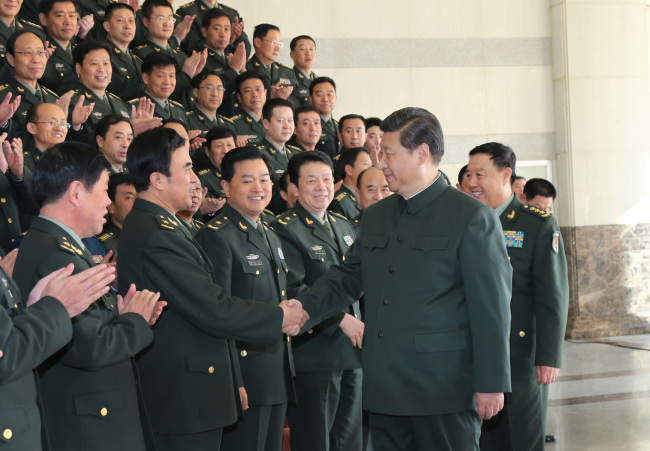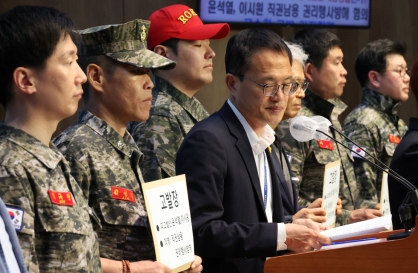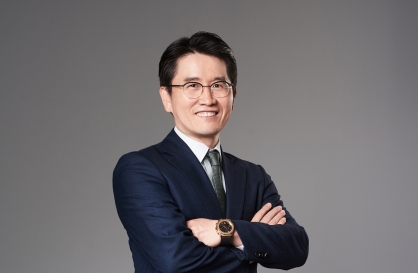China bolstering defense strategy
Observers say China’s moves on air defense zone aim to fend off unfriendly approaches
By Korea HeraldPublished : Dec. 1, 2013 - 19:53

China’s recent demarcation of an air defense zone appears to be part of its move to lay the institutional framework for what analysts call Beijing’s “anti-access/area-denial” strategy aimed at keeping hostile forces at bay.
The designation comes on the heels of its stepped-up push for physical military modernization in recent years including deploying new missiles, bombers and other advanced weapons with longer operational ranges and greater lethality, accuracy and survivability.
But China’s declaration of the Air Defense Identification Zone appears to be a notable step toward building an institutional tool to head off hostile approaches to its mainland and, at the same time, to justify expanded territorial claims in its own terms.
“By creating an ADIZ that includes the Senkaku/Diaoyu Islands, Beijing may believe it has established a basis for challenging and, if necessary, taking action against Japanese aircraft operating in this zone,” the Center For Strategic and International Studies said in an analysis.
The U.S. has been striving to counter China’s anti-access/area-denial (A2AD) capability by developing new operational concepts such as AirSea Battle, a cross-domain strategy to neutralize the A2AD threats.
Anti-access, or A2, refers to action that prevents a hostile military force from moving toward a specific operational area, while area-denial or AD means an action aimed at obstructing any maneuvering within the area.
China’s unilateral drawing of the ADIZ, which overlaps with those of South Korea and Japan, has triggered concerns as it is indicative of Beijing’s desire to strengthen its A2AD capability and alter the status quo in favor of its national interests.
Observers said weak responses to China’s unilateral demarcation could further embolden the emergent power and destabilize the security landscape in the region. Seoul and Tokyo have vowed not to recognize China’s ADIZ.
“Although the ADIZ has nothing to do with maritime sovereignty, dominating the third dimension of airspace would mean a greater influence in the regional competition for power,” said Nam Chang-hee, security expert at Inha University.
“Regardless of whether Seoul, Washington and Tokyo recognize its ADIZ or not, Beijing will leave it as is and try to consolidate its air defense zone with a more long-term perspective.”
One of the most pressing concerns for the U.S. is that China’s air demarcation added to Beijing’s push to project power further into the Pacific with growing A2AD capabilities.
China’s expanded ADIZ incorporates aerial space over crucial strategic points linking what experts term “the first island chain.” The chain connects the Japanese archipelago, Ryukyu islands, Taiwan and the northern Philippines.
To overcome the A2AD challenges, Washington has been exploring a set of “offsetting” options in recent years with the aim of creating a joint force capable of handling security threats in all domains ― air, land, sea, space and cyberspace.
Some analysts cautioned against an exaggeration of China’s intentions for the time being.
“First of all, China’s declaration of the ADIZ targets Japan when Tokyo has nationalized the Senkaku/Diaoyu islands and pursued the right to collective self-defense and stronger armaments,” said Park Won-gon, a security expert at Handong Global University.
“We talk about China’s A2AD capabilities, but I don’t think China has any intentions for now toward risking a confrontational relationship with the U.S. yet (given power disparities and domestic challenges).”
By Song Sang-ho (sshluck@heraldcorp.com)
-
Articles by Korea Herald






![[Weekender] How DDP emerged as an icon of Seoul](http://res.heraldm.com/phpwas/restmb_idxmake.php?idx=644&simg=/content/image/2024/04/25/20240425050915_0.jpg&u=)



![[Music in drama] An ode to childhood trauma](http://res.heraldm.com/phpwas/restmb_idxmake.php?idx=644&simg=/content/image/2024/04/25/20240425050929_0.jpg&u=)








![[Herald Interview] Mistakes turn into blessings in street performance, director says](http://res.heraldm.com/phpwas/restmb_idxmake.php?idx=652&simg=/content/image/2024/04/28/20240428050150_0.jpg&u=20240428174656)
